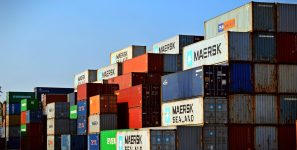Innovative Strategy Reduces Cargo Ship Emissions by 17.3%
A groundbreaking approach known as the “Blue Visby Solution” has demonstrated significant reductions in cargo ship emissions during its first trials, achieving a 17.3% decrease without any modifications to the ships themselves. This innovative method focuses on smarter speed and timing management to eliminate inefficiencies.
Read also: Changes in Agrifood Production Can Cut Greenhouse Emissions by a Third
Shipping, while efficient for bulk goods transport, accounts for about 3% of global man-made carbon emissions and is challenging to decarbonize. Traditional solutions like hydrogen, green ammonia, and sail-wings are being explored, but the Blue Visby Solution offers a simpler alternative by changing operational practices.
Typically, cargo ships follow a “sail fast, then wait” (SFTW) approach, racing from port to port and often waiting idly, burning fuel until it’s time to dock. The Blue Visby Solution proposes slowing ships down to arrive just in time, reducing hydrodynamic drag and consequently cutting fuel consumption and emissions.
A study of 3,651 Panamax vessels showed a potential median emission reduction of 23.2%. Another broader study by NAPA involving 150,000 voyages from 13,000 ships in 2019 suggested a 16% reduction by slowing down by an average of just one knot.
Recent trials with two bulk carriers, M/V Gerdt Oldendorff and M/V Begonia, confirmed these projections, recording CO2 reductions of 28.2% and 12.9% respectively. The overall average reduction was 17.3%.
Despite the promising results, shifting from the deeply entrenched SFTW practice presents a significant challenge. The Blue Visby Consortium has addressed this by developing a benefit-sharing mechanism, incentivizing all stakeholders, including ship owners, charterers, and ports, to participate.
Beyond emissions and fuel savings, the solution offers additional benefits such as reduced hull fouling, improved air quality at ports, and lower underwater noise pollution.
As decarbonization technologies evolve, the Blue Visby Solution’s efficiency gains will complement these advancements, making it a crucial element in maritime decarbonization strategies. With continued trials and anticipated commercial deployment, this method holds promise for a more sustainable future in global shipping.





Leave a Reply